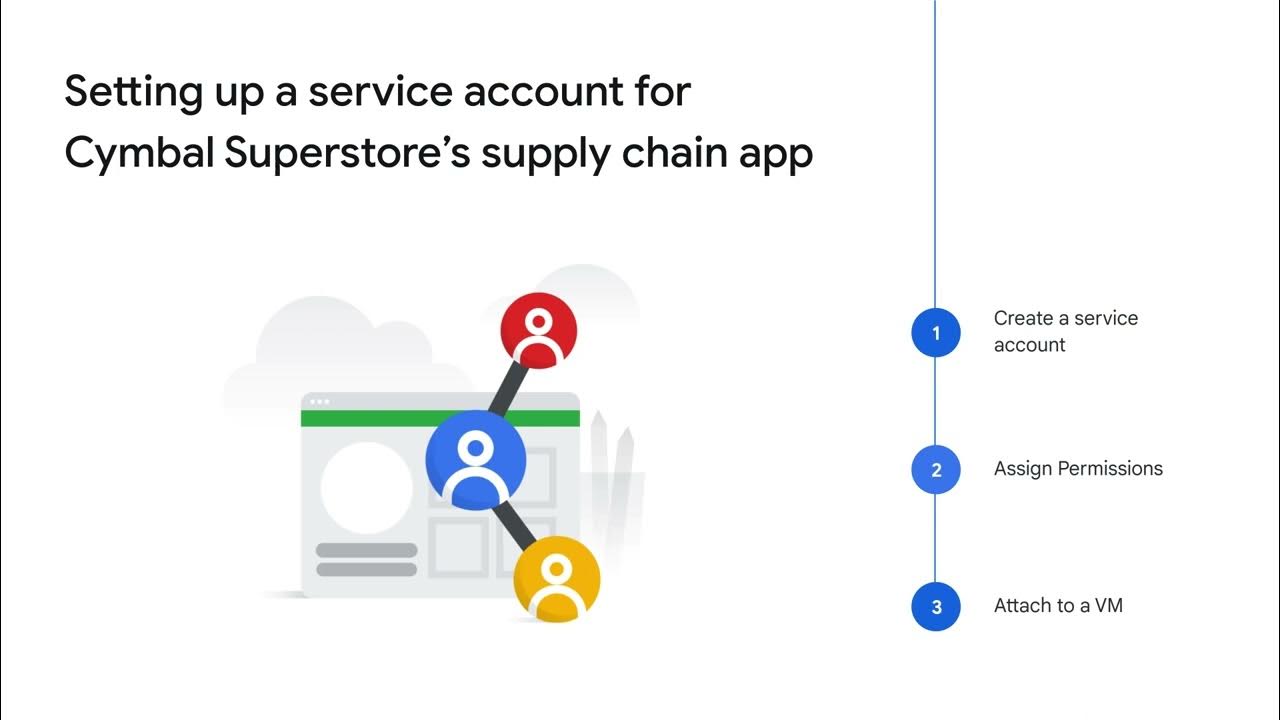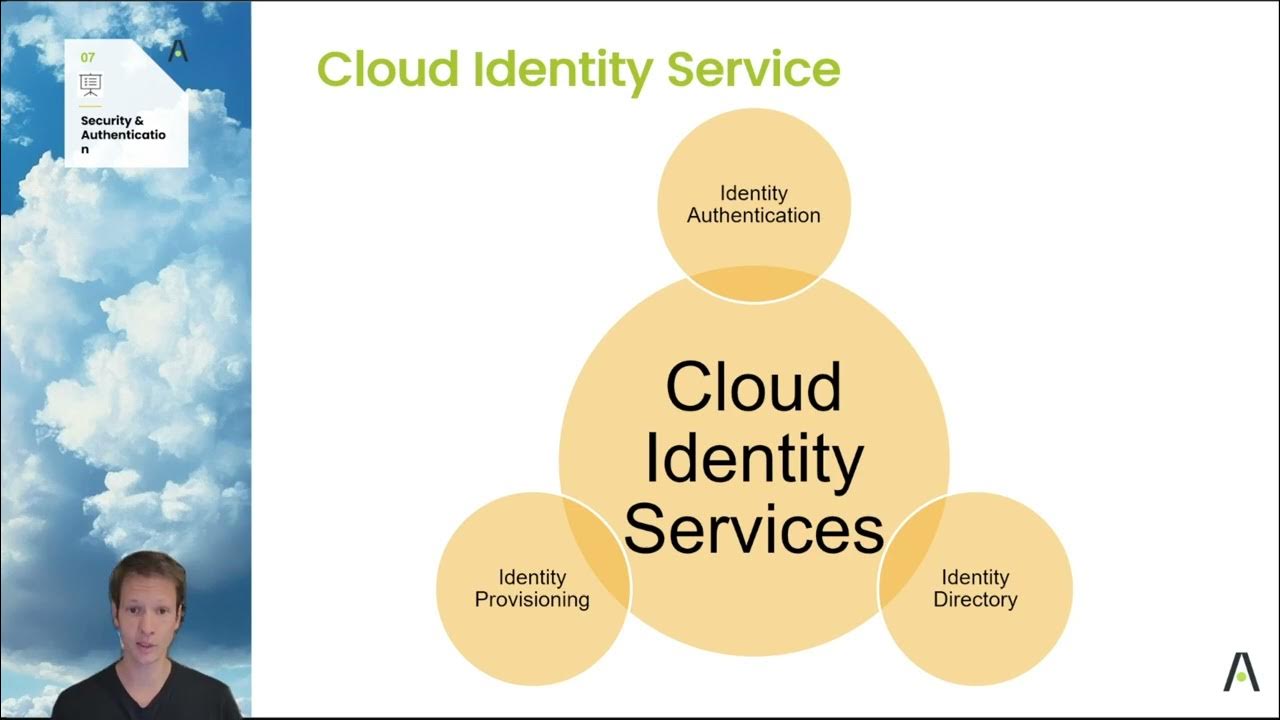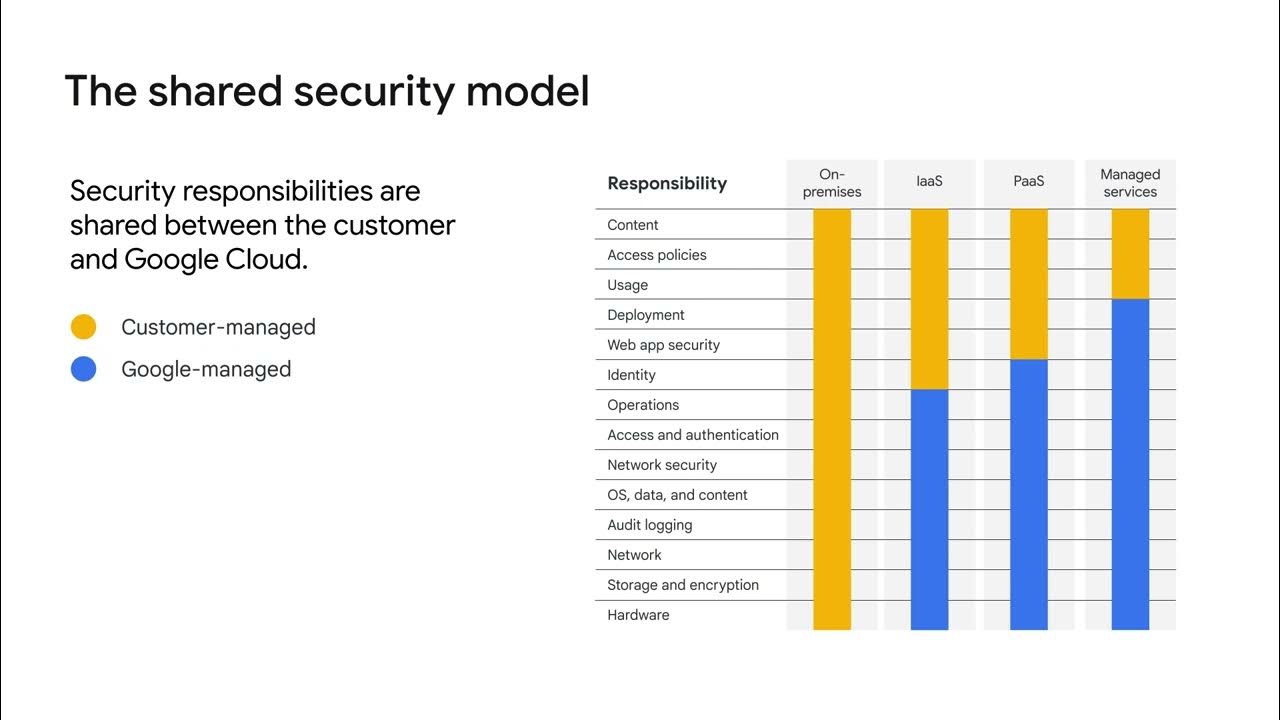Authentication and authorization with IAM
Summary
TLDRThis video introduces the concept of improving infrastructure security through authentication and authorization using Identity and Access Management (IAM) on Google Cloud. It explains how IAM allows administrators to manage permissions and roles, using examples of basic, predefined, and custom roles for more specific needs. The video also covers service accounts, which allow applications to authenticate with resources securely. Emphasis is placed on using Cloud Identity to centrally manage users and groups. Finally, the importance of applying the least-privilege model is highlighted, ensuring users only have the minimal access needed to perform their tasks.
Takeaways
- 😀 IAM (Identity and Access Management) helps administrators secure resources by defining who can do what on which resources.
- 😀 IAM policies are based on 'who' (Google Accounts, groups, service accounts, etc.) and 'what' (roles with permissions).
- 😀 Roles in IAM are collections of permissions, such as managing virtual machine instances in Google Cloud.
- 😀 Deny rules in IAM take precedence over allow rules, ensuring certain actions can be explicitly prevented.
- 😀 Cloud Identity allows organizations to centrally manage users and groups, improving user access control.
- 😀 With Cloud Identity, administrators can disable accounts and remove users from groups when they leave the organization.
- 😀 Google Cloud offers three types of IAM roles: basic, predefined, and custom.
- 😀 Basic roles (owner, editor, viewer, billing administrator) are broad and affect all resources in a project.
- 😀 Predefined roles are specific to Google Cloud services and allow more granular control over permissions.
- 😀 Custom roles allow organizations to implement the 'least-privilege' model by providing specific permissions for unique needs.
- 😀 Service accounts authenticate applications to Google Cloud services using cryptographic keys, not passwords, and can have IAM policies attached to them.
Q & A
What is IAM and why is it important for Google Cloud security?
-IAM (Identity and Access Management) is a tool that helps administrators manage who can access Google Cloud resources and what actions they can perform on them. It enhances security by ensuring that only authorized individuals or services can access specific resources, and it allows the definition of detailed policies for resource access.
What are the key components of an IAM policy?
-An IAM policy consists of three key components: 'who' (the identity or group that will access resources), 'can do what' (the role that defines what actions can be performed), and 'on which resources' (the specific resources these policies apply to).
What types of roles are available in IAM?
-There are three types of roles in IAM: basic roles, predefined roles, and custom roles. Basic roles are broad and apply to entire projects, predefined roles are specific to Google Cloud services, and custom roles allow organizations to create highly specific permissions based on job needs.
What is the purpose of basic roles in IAM?
-Basic roles in IAM (owner, editor, viewer, and billing administrator) provide broad permissions. These roles apply to all resources within a Google Cloud project and are useful for general management but may be too broad for more sensitive operations.
How do predefined roles differ from basic roles in IAM?
-Predefined roles are more specific than basic roles and are tied to particular Google Cloud services. They allow finer control over permissions, as they grant predefined sets of actions relevant to particular services, such as Compute Engine or Cloud Storage.
What is the advantage of using custom roles in IAM?
-Custom roles provide a highly granular level of control by allowing organizations to define specific sets of permissions tailored to the needs of individual users or job roles, following the principle of least privilege.
What are the limitations of custom roles in IAM?
-Custom roles can only be applied at the project or organization level, not at the folder level. Additionally, organizations must manage the permissions within custom roles, which can be complex and require ongoing maintenance.
How does the hierarchy in IAM policies work?
-IAM policies in Google Cloud are inherited through the resource hierarchy. A policy applied to a resource like a project or folder automatically applies to all sub-resources within that hierarchy unless explicitly overridden. Deny policies take precedence over allow policies.
What is Cloud Identity and how does it help with IAM?
-Cloud Identity is a service that enables organizations to manage users, groups, and devices centrally. It integrates with IAM to provide a more secure and streamlined way to manage access and user roles, especially for organizations that need to manage identities beyond Google accounts.
How do service accounts function in IAM?
-Service accounts act as identities for applications or virtual machines (VMs) to authenticate and interact with other Google Cloud services. They are granted IAM roles, like a user, to define what actions they can perform, and they use cryptographic keys for secure access instead of passwords.
Outlines

Этот раздел доступен только подписчикам платных тарифов. Пожалуйста, перейдите на платный тариф для доступа.
Перейти на платный тарифMindmap

Этот раздел доступен только подписчикам платных тарифов. Пожалуйста, перейдите на платный тариф для доступа.
Перейти на платный тарифKeywords

Этот раздел доступен только подписчикам платных тарифов. Пожалуйста, перейдите на платный тариф для доступа.
Перейти на платный тарифHighlights

Этот раздел доступен только подписчикам платных тарифов. Пожалуйста, перейдите на платный тариф для доступа.
Перейти на платный тарифTranscripts

Этот раздел доступен только подписчикам платных тарифов. Пожалуйста, перейдите на платный тариф для доступа.
Перейти на платный тарифПосмотреть больше похожих видео

Managing access for Cymbal Superstore’s cloud solutions

Chapter #8 - Cloud IAM Basics | identity & access management on google cloud platform (gcp)

How to secure your cloud environment

Episode 29: Cloud Identity Services Introduction

The shared security model

Oauth2 JWT Interview Questions and Answers | Grant types, Scope, Access Token, Claims | Code Decode
5.0 / 5 (0 votes)
